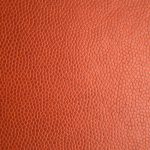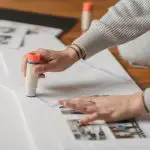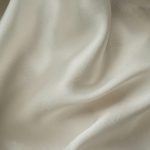To fix common upholstery tears, first identify your fabric type to choose the right materials. Clean and trim the damaged area, then hand-stitch small rips with matching thread for a neat finish. For quick fixes, fabric glue works well, while larger holes need patching with similar fabric. Align patterns carefully to blend repairs seamlessly. With the right tools and techniques, you’ll restore your furniture’s look in no time. Keep exploring to discover more detailed steps and tips.
Table of Contents
Key Takeaways
- Identify the upholstery fabric type by checking tags or performing a burn test to choose the right repair method.
- Gather essential tools like upholstery needles, matching thread, fabric glue, and patch fabric before starting repairs.
- Clean and dry the damaged area, then trim loose threads and smooth fabric edges for better adhesion and stitching.
- Use small, tight hand stitches from the inside to securely close tears, pulling edges evenly for a seamless fix.
- Match patch fabric in color and pattern, use invisible stitching, and feather edges to blend repairs naturally with existing upholstery.
Identifying the Type of Upholstery Fabric
Before you begin any repairs, you need to identify the type of upholstery fabric you’re working with.
Check the furniture tag first; it often lists the fabric content. If there’s no tag, examine the texture and weave closely.
Start by checking the furniture tag for fabric details; if absent, closely inspect the texture and weave.
Natural fibers like cotton and linen feel soft but may wrinkle easily, while synthetic fabrics like polyester and nylon feel smoother and resist wrinkles.
Leather and vinyl have distinct textures—you can spot leather by its grain and smell.
You can also test a small hidden area by gently burning a few fibers—natural fibers smell like burning paper, synthetics smell chemical.
Identifying your fabric helps you choose the right repair method and materials, ensuring your fix blends seamlessly and lasts longer.
Take your time with this step—it saves frustration later.
Tools and Materials Needed for Repairs
Repairing upholstery requires having the right tools and materials on hand to guarantee a smooth process. Before you start, gather everything you’ll need to handle common tears, rips, and holes effectively.
Having these essentials ready will save time and improve your repair quality.
Here are four key items you’ll want to have:
- Upholstery needle and strong thread – Choose thread that matches your fabric and a needle capable of piercing tough material.
- Fabric glue or adhesive – Useful for securing patches or reinforcing weak spots without sewing.
- Patch fabric – Select a piece that closely matches your upholstery in texture and color.
- Scissors and seam ripper – For trimming and removing damaged fabric cleanly.
With these tools and materials, you’ll be set to tackle most upholstery repairs confidently.
Preparing the Damaged Area for Repair
Although it might seem simple, preparing the damaged area properly is crucial for a lasting repair. Start by cleaning the spot thoroughly to remove dirt, dust, and oils; use a mild soap and water or a fabric cleaner suited to your upholstery type. Let it dry completely before moving on.
Next, trim any loose threads or jagged edges around the tear carefully with sharp scissors to create a neat working area. If the fabric is stretched or puckered, gently smooth it out to align the fibers.
For holes, check the backing material and remove any debris. Taking these steps guarantees the repair materials will adhere or stitch securely, giving your upholstery a strong, clean finish.
Stitching Small Tears and Rips by Hand
Once you’ve prepared the damaged area, you can start stitching small tears and rips by hand to restore your upholstery.
Use a needle and thread that closely match your fabric for a seamless look.
Follow these steps for a neat repair:
- Thread your needle and tie a knot at the end.
- Begin stitching from the inside of the fabric to hide the knot.
- Use small, tight stitches along the tear, pulling the fabric edges together evenly.
- Finish with a secure knot on the inside and trim excess thread.
Using Fabric Glue for Quick Fixes
When you need a fast and easy solution for minor upholstery damage, fabric glue can be a great option. It works well for small tears, rips, or loose seams where stitching might be too time-consuming.
First, clean the area thoroughly and let it dry. Then, apply a thin layer of fabric glue along the edges of the tear. Press the fabric together firmly and hold it in place for a few minutes.
Clean and dry the area, apply fabric glue to the tear edges, then press firmly and hold briefly.
Use clips or weights to keep the fabric secure while the glue dries completely, usually for several hours. Fabric glue is flexible when dry, so it won’t stiffen your upholstery.
Just remember, this method is best for small fixes and quick repairs, not for larger damage that needs patching or stitching.
Patching Larger Holes With Matching Fabric
Larger holes in your upholstery need more than just glue—they require patching with matching fabric to restore both appearance and strength.
Start by finding fabric that closely matches your upholstery in color, texture, and weight. Next, cut a patch slightly larger than the hole.
Then, trim the hole’s edges to remove frayed threads and create a clean shape. Finally, attach the patch using fabric glue or by sewing it in place, ensuring the edges align seamlessly.
- Select matching fabric for a cohesive look.
- Cut the patch larger than the damaged area.
- Clean and shape the hole for better adhesion.
- Secure the patch with glue or stitches for durability.
This method gives your upholstery a professional, lasting fix.
Repairing Upholstery on Cushions and Pillows
Cushions and pillows often take the brunt of daily use, making their upholstery prone to tears, stains, and wear.
Start by removing the cushion cover if possible, which makes repairs easier. For small tears, use a fabric adhesive or iron-on patch inside the cover to prevent further damage.
When sewing, choose a needle and thread suitable for your fabric type and sew small, tight stitches along the tear edges. For holes, cut a fabric patch slightly larger than the damage and secure it inside the cover with fabric glue or by stitching.
If the cushion lacks a removable cover, carefully sew the tear with a hidden stitch, working from the inside to maintain the cushion’s shape.
Always test adhesives on a hidden area first.
Tips for Blending Repairs With Existing Fabric
Although repairing upholstery can restore function, blending the repair seamlessly with the existing fabric guarantees your work remains discreet and visually appealing. To achieve this, you need a careful approach that considers texture, color, and pattern.
- Match Fabric Closely: Use fabric that matches the original in color, pattern, and texture to avoid noticeable patches.
- Use Invisible Stitching: Employ fine, tight stitches like ladder or slip stitch to keep seams hidden.
- Align Patterns Precisely: When working with patterned fabric, align designs carefully to maintain continuity.
- Feather the Edges: Gradually blend repaired fabric edges into the surrounding area by trimming and lightly fraying them for a natural look.
Following these tips assures your upholstery repair looks professional and lasts longer.
Frequently Asked Questions
Can I Use Upholstery Repair Techniques on Leather Furniture?
You can definitely use upholstery repair techniques on leather furniture. Just make sure to choose products specifically designed for leather, like leather repair kits, and follow instructions carefully to restore tears, rips, or holes effectively.
How Do I Prevent Future Tears in High-Traffic Areas?
To prevent pesky punctures in high-traffic spots, you’ll want to regularly rotate cushions, apply protective covers, and promptly clean spills. These simple steps strengthen your sofa’s surface, stopping snags before they start.
Are Professional Upholstery Repairs Worth the Cost?
You’ll find professional upholstery repairs worth it when you want durable, high-quality results that save your furniture’s value. They use expert techniques and materials, ensuring repairs last longer than quick DIY fixes would.
What Are the Best Ways to Clean Repaired Upholstery?
Think of your repaired upholstery as a delicate garden; you’ll want to gently vacuum, spot-clean with mild soap, and avoid harsh chemicals. Always test a small area first to keep those fixes looking fresh and flawless.
How Long Do DIY Repairs Typically Last?
DIY repairs typically last several months to a few years, depending on the damage and materials you use. If you choose quality patches and adhesives, and handle the piece gently, your fix will hold up much longer.
- The Use of Nonwovens in Construction and Civil Engineering - July 11, 2025
- The Use of Nonwovens in Construction and Civil Engineering - July 11, 2025
- The Use of Nonwovens in Construction and Civil Engineering - July 11, 2025






